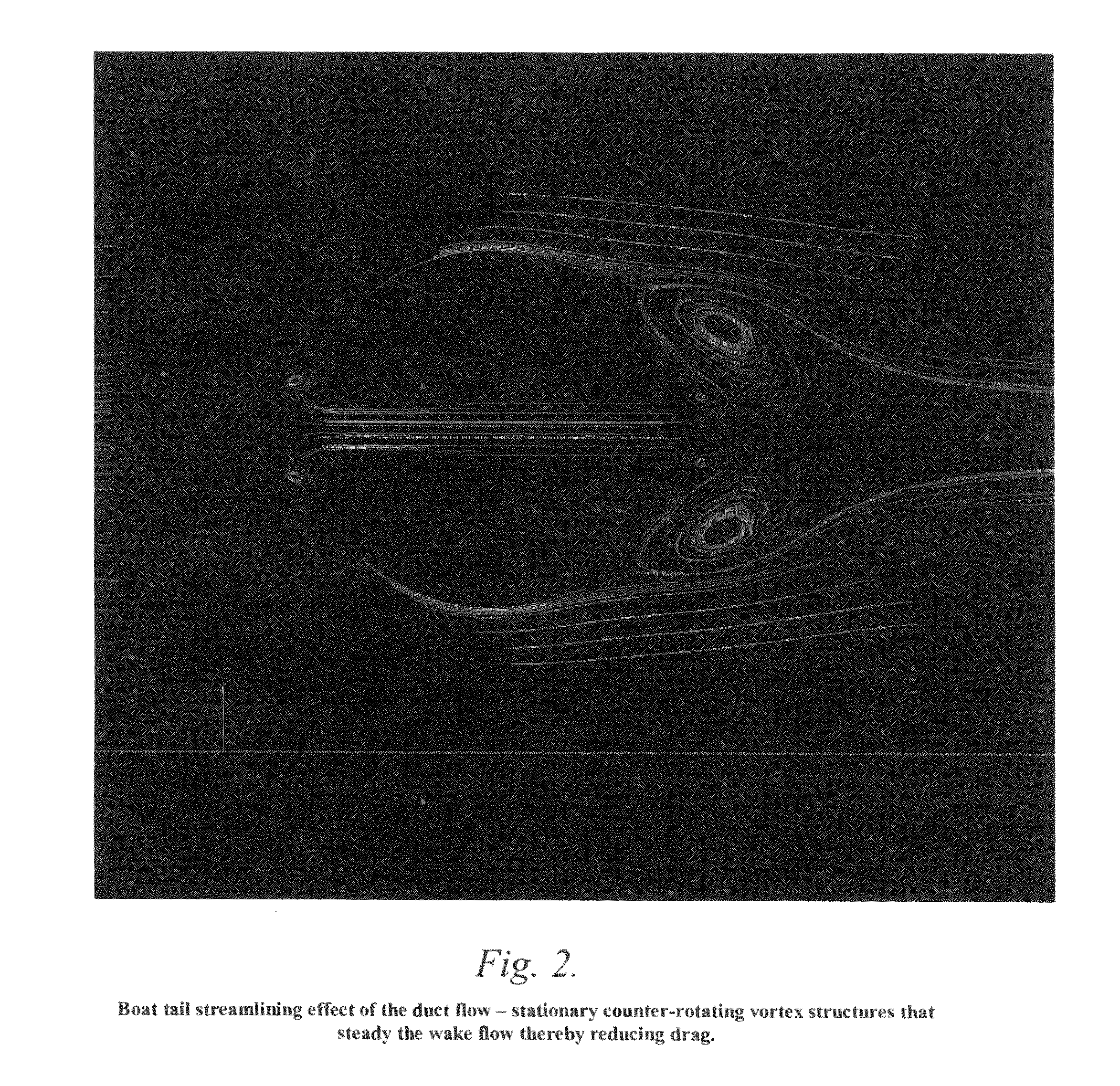Advanced airship technologies
a technology of advanced airships and airframes, applied in the field of airships, can solve the problems of large unsteady wake, high drag, and increase the complexity of the solution
- Summary
- Abstract
- Description
- Claims
- Application Information
AI Technical Summary
Benefits of technology
Problems solved by technology
Method used
Image
Examples
example
[0081]An implementation of the present invention on a small scale (6.5 ft diameter) remote controlled experimental airship model is shown in FIGS. 17-18. This is a fully electric vehicle, with Li polymer batteries and a brushless electric motor controlled by an electronic speed control unit connected to a remote control receiver driving a propeller within the duct of the airship. The receiver also controls the servomechanisms that actuate control surfaces located at the exit end of the duct. Gyrostabilization units are connected in series with each of the servomechanisms in order to provide flight stability in pitch and yaw. Details of the specific implementation of the duct end control surfaces are shown in FIG. 19. Details of the specific implementation of the duct propulsor, in this case a propeller, are shown in FIG. 20. FIGS. 17 and 18 illustrate the ducted spherical airship of the present invention with a propeller-based propulsor inside the duct and louver-based control surfa...
PUM
 Login to View More
Login to View More Abstract
Description
Claims
Application Information
 Login to View More
Login to View More - R&D
- Intellectual Property
- Life Sciences
- Materials
- Tech Scout
- Unparalleled Data Quality
- Higher Quality Content
- 60% Fewer Hallucinations
Browse by: Latest US Patents, China's latest patents, Technical Efficacy Thesaurus, Application Domain, Technology Topic, Popular Technical Reports.
© 2025 PatSnap. All rights reserved.Legal|Privacy policy|Modern Slavery Act Transparency Statement|Sitemap|About US| Contact US: help@patsnap.com



